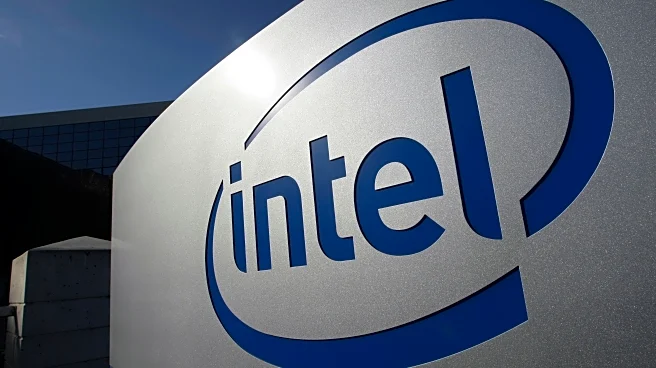What's Happening?
Intel has reported strong earnings results, largely attributed to a supply constraint situation that has allowed the company to raise prices. According to CNBC's Jim Cramer, Intel's Chief Financial Officer,
David Zinsner, indicated that the semiconductor maker is experiencing significant supply constraints across several products. This situation has been beneficial for Intel, as well as other tech companies like Micron, AMD, and Nvidia, which are also facing similar supply issues. The high demand for semiconductors, driven by the storage needs of artificial intelligence, has outpaced supply, partly because semiconductor capital equipment companies did not anticipate the volume of orders.
Why It's Important?
The supply constraints faced by Intel and other tech companies highlight a critical dynamic in the semiconductor industry, where demand is outstripping supply. This situation allows companies to increase prices, which can lead to improved financial performance and investor confidence. The constraints are not limited to the tech sector; companies like Boeing and GE Vernova are also experiencing similar issues with their products. This trend suggests a broader economic impact, as supply constraints can influence stock market performance and trade balances. Companies that can navigate these challenges effectively may see significant gains.
What's Next?
As supply constraints continue, companies like Intel may need to strategize on how to manage production and meet demand. The ongoing situation could lead to further price adjustments and impact global trade dynamics, especially if other countries look to the U.S. for big-ticket items to address trade deficits. Stakeholders in the semiconductor industry and beyond will likely monitor these developments closely, as they could have long-term implications for market strategies and economic policies.
Beyond the Headlines
The current supply-demand imbalance in the semiconductor industry raises questions about the preparedness of companies to handle rapid technological advancements and market shifts. It also underscores the importance of strategic planning and investment in manufacturing capabilities to prevent future supply chain disruptions. The situation may prompt a reevaluation of global supply chain strategies and encourage more localized production to mitigate risks.













